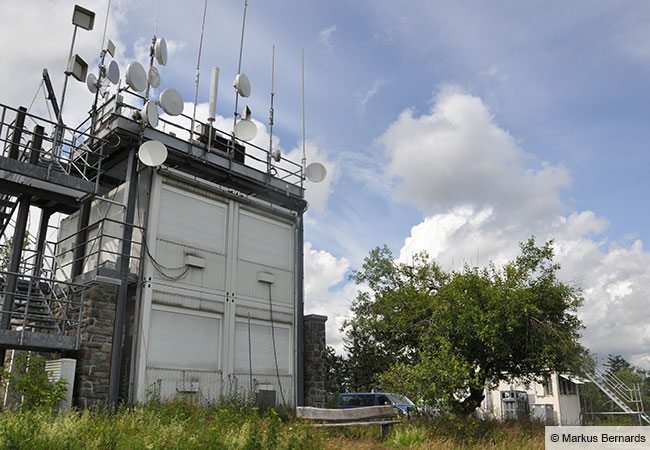Since the beginning of the pandemic, research groups have been working on methods to detect SARS-CoV-2 viruses in wastewater to be used to monitor the degree of COVID-19 transmission among the population. The idea is simple: since infected people shed SARS-CoV-2 viruses in their faeces, wastewater samples could give an indication of the infection numbers among all the residents connected to a wastewater treatment plant. Given sufficient sensitivity, these analyses could function as an early-warning system for authorities, allowing early detection of local case increases within the catchment area of a treatment plant.
A consortium of Frankfurt virologists, ecotoxicologists and evolution researchers, and water researchers from Aachen have now shown for the first time in Germany that SARS-CoV-2 genetic material can be detected in treatment plants using modern molecular methods. Analyses revealed 3 to 20 gene equivalents per millilitre of raw wastewater in all nine treatment plants tested during the first pandemic wave in April 2020. This concentration level was also measured in studies in the Netherlands and the USA.
The researchers were astonished that older retention samples from the years 2017 and 2018, before the outbreak of the pandemic, also delivered signals. Extensive method validation revealed that the gene primer erroneously registered not only SARS-CoV-2, but other non-disease causing coronaviruses in wastewater as well. The current method, developed specifically for SARS-CoV-2 in wastewater, has been confirmed through gene sequencing.
The method can be now employed for what is called wastewater-based epidemiology: the measured viral load of a treatment plant allows conclusions on the number of COVID-19 infected individuals in the catchment area. In the largest treatment plant, 1,037 acute cases were estimated in the catchment area for a viral load of 6 trillion (6 x 1012) gene equivalencies pro day; in smaller treatment plants with viral loads lower by two orders of magnitude, 36 cases were estimated.
The sensitivity is sufficient as an early warning system to indicate whether the action value of 50 incidents per 100,000 residents has been exceeded. Earlier hopes that the precision would be sufficient to determine the estimated number infected people not reported through laboratory diagnosis have not yet been fulfilled. However, the scientists believe that further improvements in the methods are possible.
In vitro cell tests have shown that the SARS-CoV-2 fragments verified in the wastewater are non-infectious. However, due to the high loads and low retention capacity of conventional treatment plants, the behaviour of SARS-CoV-2 in the water cycle should be investigated more deeply. The authors of the study are working on making their knowledge available for an application of the method soon, with the goal of achieving a close cooperation between health ministries, environmental ministries, treatment plant operators and professional associations.
The research team was formed on the initiative of the non-profit Research Institute for Water and Waste Management at RWTH Aachen (FiW), the Institute of Environmental Engineering at RWTH Aachen (ISA), the Institute for Medical Virology at University Hospital Frankfurt (KGU) and Department for Evolution Ecology and Environmental Toxicology at the Institute of Ecology, Evolution and Diversity at Goethe University Frankfurt, and is supported by six water boards in North Rhine-Westphalia, the LOEWE Centre for Translational Biodiversity Genomics (TBG) and the University of Saskatoon in Canada.
Publication: Sandra Westhaus, Frank-Andreas Weber, Sabrina Schiwy, Volker Linnemann, Markus Brinkmann, Marek Widera, Carola Greve, Axel Janke, Henner Hollert, Thomas Wintgens, Sandra Ciesek. Detection of SARS-CoV-2 in raw and treated wastewater in Germany – suitability for COVID-19 surveillance and potential transmission risks. Science of the Total Environment. https://doi.org/10.1016/j.scitotenv.2020.141750, https://www.sciencedirect.com/science/article/pii/S0048969720352797







